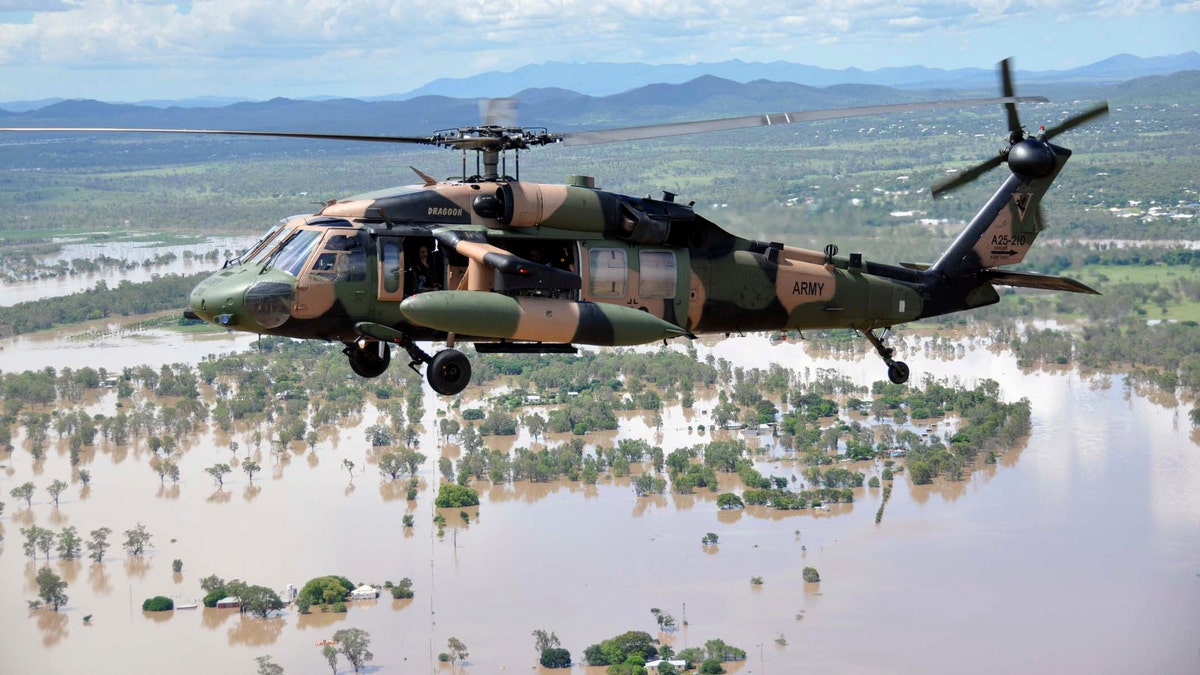
Australian Prime Minister Julia Gillard, seen through the open window, flies in an Army helicopter to view the flooded Fitzroy River in northeast Queensland state, Australia, Saturday, Jan. 8, 2011. Ten people have died and some 200,000 people have been affected by the floods spawned by torrential rains falling on and off since late November in the huge Outback state (AP2011)
BRISBANE, Australia – Residents of two Australian towns waited anxiously behind levies and walls of sandbags on Sunday to find out if they would become the latest victims of the country's huge floods.
About 20 buildings in low-lying areas of Maryborough, home to about 22,000 people, were expected to be inundated when the swollen river running through the town peaks later Sunday, though the threat was not major.
Mayor Mick Kruger said a levy bank had been built in the town's main street.
"A number of businesses ... will have floodwaters in their basements," he said.
In St. George town further inland, residents waited for floodwaters to start receding after topping out on Saturday below the level that forecasters had earlier expected. About 10 houses were believed to be affected, including one that was flooded Saturday when a levy around it collapsed, Australian Broadcasting Corp. radio reported.
Heavy rain was still falling Sunday on parts of waterlogged Queensland state, which officials say has almost no capacity to absorb more water after weeks of drenching weather submerged an area the size of Germany and France combined.
Ten people have died since late November and about 200,000 have been affected by the floods. Roads and rail lines have been cut, Queensland's big-exporting coal industry has virtually shut down, and cattle ranching and farming across a large part of the state are at a standstill.
Officials say the rain falling now is not expected to make the crisis significantly worse, and a massive relief operation has moved from emergency operations to recovery.
Residents of some of the 40 affected towns have returned home and begun mopping up sludge left behind by the floods, while others — like in the biggest community hit, the city of Rockhampton that is home to 75,000 people — are waiting for floodwaters to recede to start the clean up. Officials say it will be another week before the river level drops.
Prime Minister Julia Gillard flew Saturday to several towns cut off by floodwaters or partially underwater, and sought to reassure residents their towns would be restored. The army general in charge of the operation says it might take years to fix all the damaged roads, rail lines and bridges.
Queensland officials have said the price of rebuilding homes, businesses and infrastructure, coupled with economic losses, could be as high as $5 billion.
Australia's worst flooding in some 50 years was caused by tropical rains that fell for days, starting just before Christmas. Some 1,200 homes were inundated and almost 11,000 more have water damage. Nearly 4,000 people were evacuated, and many are still staying with friends or in relief shelters.
